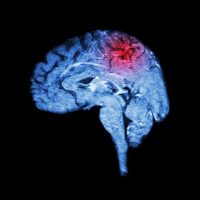Did Your Accident Cause an Intracranial Hemorrhage?

All head trauma should be taken seriously, as it can have significant and long-term repercussions for accident victims. Like all injuries, however, head injuries range in severity. Of the more serious traumatic brain injuries, bleeding in the brain is one of the most devastating, as it can cause a buildup of pressure and oxygen loss, both of which can result in permanent brain damage and even death.
Types of Brain Bleeds
Intracranial hemorrhages, or brain bleeds, as their name suggests, occur when there is bleeding inside of the brain itself. These injuries are, however, more complex than they sound, as there are actually a number of different types of brain bleeds, the severity of which can depend on the injury’s location. Generally, brain bleeds tend to occur between the skull and the brain tissue, in any one of the three membrane layers between the skull and the brain. The other main type of brain bleed takes place in the brain tissue itself. These kinds of injuries typically fall under one of two categories:
- Intracerebral hemorrhages; and
- Intraventricular hemorrhages.
While brain bleeds could be the result of a stroke or blood clot, they are most often linked to head trauma sustained in car accidents, falls, violent assaults, and sports-related injuries.
How Trauma Causes Brain Bleeds
A sudden trauma to the head can cause the blood vessels in the brain to burst or leak. This in turn means that oxygen won’t be able to make itself to the brain, which can cause brain damage. If the blood loss isn’t stopped, then it can continue to pool in the injured part of the brain, causing excessive pressure and future oxygen deprivation. Unfortunately, while serious, these kinds of problems don’t usually manifest outwardly, which makes them hard to detect. This is why it’s so important for accident victims to become familiar with the kinds of symptoms that, when experienced after a head trauma, could be indicative of bleeding in the brain, including:
- Severe headaches;
- Sudden numbness, tingling, or weakness;
- Dizziness;
- A loss of coordination;
- Vision loss;
- Slurred speech; and
- Seizures.
Once a person has sought medical attention, specialists will be able to perform diagnostic tests to determine whether he or she is suffering from a brain bleed. After diagnosis, via physical exams and brain scans, an injured party can start treatment, which could involve relieving pressure on the brain through surgical intervention, draining the blood from the injured area, or repairing the damaged vessels themselves. All of this can be prohibitively expensive, which is why accident victims should strongly consider seeking compensation from the person responsible for their injuries.
Serving Florida Accident Victims for Over 35 Years
Accident victims who suffer from a brain bleed can expect a long road to recovery. Fortunately, they don’t always have to bear the burden of paying for that recovery on their own. To learn more about your own recovery options following a serious head trauma, please call the experienced Tampa brain injury lawyers at Anderson & Anderson today. You can set up a free consultation by calling our office at 813-251-0072 or by sending us an online message.
Sources:
my.clevelandclinic.org/health/diseases/14480-brain-bleed-hemorrhage-intracranial-hemorrhage#:~:text
ncbi.nlm.nih.gov/books/NBK470242/
